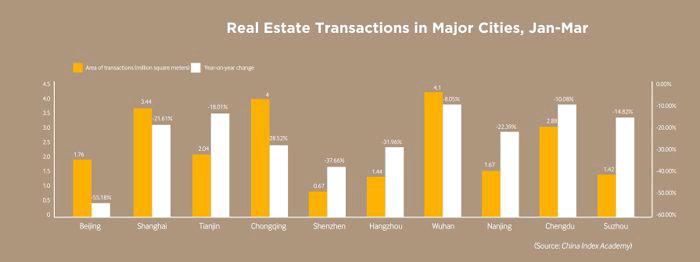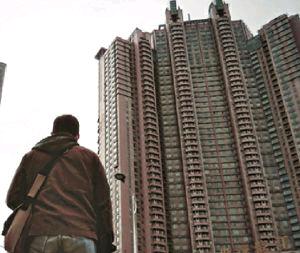Putting Housing Prices In Order
2014-05-08ByDengyaqing
By+Deng+yaqing
When Chinas largest residential property developer vanke in March launched its housing project, neighboring Beijings South Sixth Ring Road, with a price tag of 21,000 yuan ($3,380) per square meter, 3,000 yuan ($480) lower than market expectations, voices predicting a continuous price hike in the housing market seemed to diminish. But the demand still proved to be robust, for all housing units were sold on the same day.
This rapid pace was echoed by another housing project in Beijings Tongzhou District developed by R&F Properties. With an average price of 28,000 yuan ($4,510) per square meter, the housing project attracted thousands of homebuyers, most of whom were those aged around 30 years old.
As urbanization keeps moving forward, housing prices across the nation, especially in metropolises like Beijing, Shanghai and Guangzhou, have experienced vigorous growth.
yet, the overall upward trend recently seemed to have come to a juncture. Despite the housing supply mounting up, homebuyers seem to have gradually lost their enthusiasm and the market has begun to calm down. In Wenzhou of east Chinas Zhejiang Province, housing prices have declined for 31 consecutive months, down 31 percent from the highest recorded level.
According to the National Bureau of Statistics, in February new home prices in 70 major cities rose by an average of 11.1 percent year on year, slowing by 1.3 percentage points from January; prices for existing homes rose 6.4 percent year on year, compared with an average growth of 7.4 percent in January; and on a month-on-month basis, 57 out of the 70 cities saw rises in new home prices, fewer than the 62 cities who experienced the same in January.
Differentiated control
Jia Kang, Director of the Research Institute for Fiscal Science, didnt believe Chinas property market is now heading toward an irretrievable collapse, reasoning rigid demand is still strong in big cities. “It is undergoing a polarization,”Jia said.
Nonetheless, bubbles exist. “A sharp rise in housing prices always has something to do with speculation,” noted Qiu Baoxing, vice Minister of Housing and Urban-Rural Development, saying that what has happened to China now partly resembles the situation in Japan in the 1980s when market participants ranging from large enterprises to vegetable vendors jostled to have a finger in the property pie.endprint
“People tend to believe housing trade is the most lucrative business. As a result, capital and human power keep flocking to the real estate sector, which exerts a crowding-out effect on the real economy,” said Qiu.
In the mid- and late-1980s, Japan stuck to quantitative easing monetary policies in an effort to wrench itself out of the depression caused by the appreciating yen. At the same time, individuals as well as banks thought highly of the real estate industry and looked to further increase their level of investment in an asset they thought would appreciate in value. As excessive investment falsely reflected the real market demand and quickly shored up housing prices, the Japanese government suddenly tightened monetary policies, restrained real estate loans and imposed property taxes. Although bubbles were effectively squeezed out, the Japanese economy was thrown into an economic recession with heavy burdens of bad loans.
yasuhiro Sato, President and CEO of Mizuho Financial Group, suggested China should not tackle the current property issues in an overhasty way to avoid repeating the mistake made by Japan. Austerity measures, like curbing the total amount of real estate financing and elevating interest rates, would probably cause a longterm economic stagnation.
“In regulating and controlling Chinas real estate market, authorities should try economic measures before resorting to administrative ones and prevent control measures designed for a particular region from impacting the entire market,” said Qiu, suggesting that differentiated approaches needed to be implemented in different regions, for signs of polarization had begun to emerge.
In first-tier cities like Beijing, the concentration of population and resources is being constantly reinforced. Since large numbers of migrants and graduates flood into these cities, the housing demand will be still strong. On the other side, in third- and fourth-tier cities, due to sluggish industrial development and large outflow of population, the housing supply has exceeded demand.
“The growth of the real estate market is uneven across the country. In roughly seven to eight cities, housing prices are almost 10 times the average income of local residents, while the bulk of the other 600 cities havent seen any dynamic at all. Therefore, regulation and control should be oriented to tackle the overheated expansion of a handful of cities,” said Qiu.
Beyond that, the government should pick the right time to carry out intervention. As the evolution of real estate market always coincides with urbanization, measures should be taken to rein in its blind expansion when fewer and fewer rural residents migrate to cities and towns, Qiu said.endprint
“However, such an earthquake is unlikely to rock Chinas real estate market, for urbanization has not yet come to an end. In the following decade, 100 million people will leave farmlands and become urban dwellers, 100 million people will witness the shantytowns in which they live being reclaimed, and another 100 million will settle down in central and western urban regions,” said Qiu.
Ensuring social equity
In Beijing and Shanghai, people have got used to judging a persons wealth by the number of apartments he owns. It seems as if people can easily become better off through property investment rather than diligent work.
Since the selection of investment channels is quite limited, Chinese people always presume purchasing homes is the best way to make their money yield a profit, which creates the impetus for growth in the housing market.
To ensure that all citizens can benefit from the ongoing urbanization, an emphasis should be laid on small residential buildings and public properties, which would solve the housing problem for low-income families, Qiu said, noting a total of 7 million units of government subsidized homes would be constructed this year.
“Public properties will allow people who cant afford to buy homes on their own to participate in the development of the real estate market and meanwhile, relieve local governments of heavy financial burdens in solving housing problems for the low-income group,”Qiu argued.
Aside from that, taxation is also an option authorities are considering, Qiu said. To restore the dwelling function of housing, property taxes should be put in place to lift the holding cost of speculators. For instance, the first home will be free from taxation while the second home will be levied a consumption tax and the rate will be in direct proportion to the number of homes the person keeps on the books. If the person has his homes unoccupied, a vacancy tax will be slapped on them.
In addition, the long-term viability of affordable housing will significantly facilitate the realization of steady and healthy growth in the housing market, noted Song Lin, President of China Resources Group. The benign interaction between affordable housing and commercial residential housing will help redistribute social resources, because taxes collected from the commercial housing can further fund the construction of affordable housing.
“After going through with all these measures, Chinas real estate market will regain sustained, rapid and sound development,” said Song. endprint
endprint
